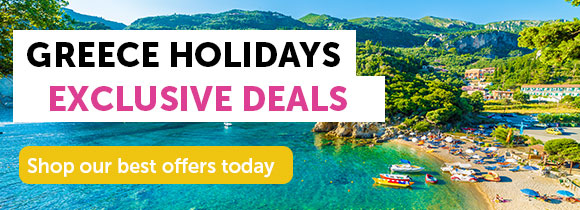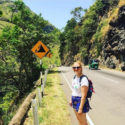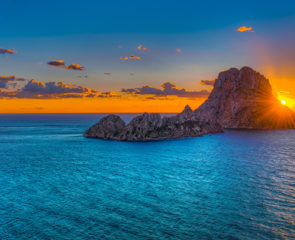 Inspiration
Inspiration

Greek Island Hopping Routes Explained
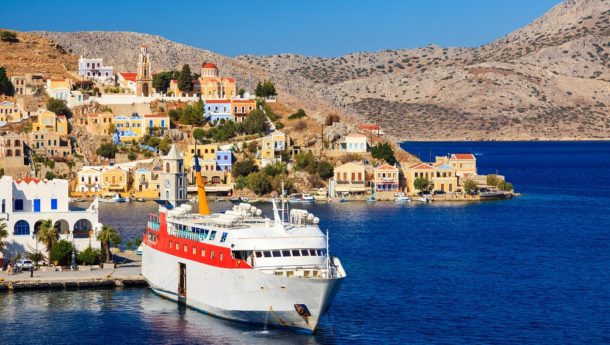
If you’re planning a holiday to Greece, why settle for just one island when it’s so easy to experience some incredible Greek island hopping routes? This will enable you to make the most of your time in this part of the world and see far more of this beautiful country than you would have done otherwise.
Each cluster has its own characteristics, as do the islands within the various groups. Travelling around them allows you to experience each side, from the rich history to the sun-drenched coastlines and everything in between.
There are, however, around 6,000 islands and islets across the Aegean and Ionian Seas. Of these, only around 230 are inhabited and only 80 have a significant number of inhabitants. But, with so many to choose from, how do you know where to start – let alone what route to take?
How do you move between Greek islands?
You have two options when it comes to travelling between the islands, by air or by sea:
Ferry: This is the most popular way to get around. You can buy your ticket the day before your departure but you may want to book in advance to ensure you definitely have a seat – especially in high season.
If you are travelling through the night you also have the option to stay in a cabin. The easiest time to travel between the islands is June to September, although you might find that there are limited ferries if you are travelling to the more remote islands.
Top tip: Don’t just see the ferries as transport to take you from one island to the other. Make sure you enjoy the journey because these trips are all part of the experience.
From here you can admire wonderful, uninterrupted views of the coastline and out to sea. Most ferries will have seats indoors and outdoors – the best views are often outside on the top deck.
Speed boat: You’ll have the opportunity to travel by hydrofoil or catamaran between many of the islands. This will significantly reduce the time between destinations, but prices may be slightly higher. It’s best to book in advance as spaces are limited.
Plane: Flying between islands will save you a few hours in travel time and they tend to be more readily available. It is, however, worth taking the cost into account, especially if you’re travelling on a budget.
Yacht: You also have the option to rent a yacht on your holiday to Greece. This will save you having to organise accommodation, enable you to visit smaller, lesser-known islands and move around at your own pace.
Top tip: Be aware that if you are visiting in low season, you might find you have less flexibility while travelling around – especially when it comes to ferries.
Greek island hopping routes
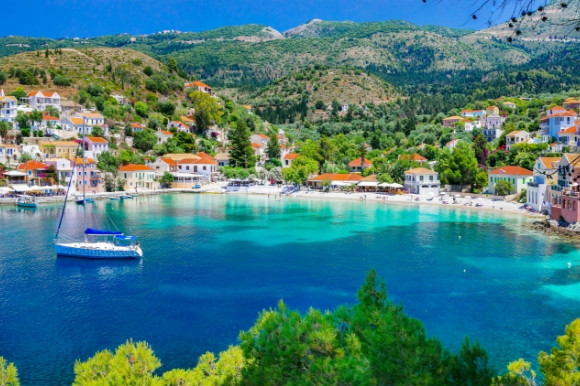
There are several groups of islands, although you might want to pick just one to make it easier to travel around and to save time. There are six to choose from –
Cyclades: Situated in the Aegean Sea, this is the largest cluster of islands. It is also the most popular and home to many of the country’s most recognisable destinations. If you’re flying straight here head for Mykonos, which is at the heart of this group, or Santorini, on the ferry route between Athens and Crete. It is easy to hop over to most of the islands from Paros or Naxos.
This includes: Mykonos, Tinos, Naxos, Paros, Antiparos, Santorini, Sifnos, Syros, Milos, Amorgos and Folegandros.
North Aegean: This group of islands can be found to the north east of Greece. They are situated in the Aegean Sea and are fairly spread out, making your travel time slightly longer. It is easy to reach Thassos from the mainland.
This includes: Thassos, Chios, Lesvos, Lemnos and Samos.
Dodecanese: These islands are in a long line, effectively following Turkey’s coastline in the southeastern Aegean. There are good connections to many islands, including Crete. It is also possible to visit Turkey from here.
This includes: Patmos, Kos, Rhodes and Symi.
Ionian: As the name would suggest, these islands can be found in the Ionian Sea, off the north west coast of Greece. This is another very popular cluster of islands and is comprised of some well-known holiday destinations. These islands are close together but you’ll find there are fewer ferries and not as many direct routes.
This includes: Kefalonia, Corfu and Zante.
Sporades: This fairly small cluster is the least visited. You can discover these islands just off the east coast of Greece, with hydrofoil and ferry services between the three main islands.
This includes: Skiathos, Skopelos and Alonissos.
Saronic: You’ll find these islands in the Saronic Gulf, near Athens – they are actually the closest of all the clusters to the capital. There are frequent daily ferries, especially to Aegina.
This includes: Hydra, Spetses, Poros and Aegina.
You might be wondering where Crete is? This is the largest island and therefore doesn’t come under any of the clusters but is an island in its own right.
Top Tip: Don’t try and squeeze too much in. While it is great to visit several islands, you want to actually be able to experience them. Not allowing enough time in each destination means you might not get much further than the port.
Which island should you start with?
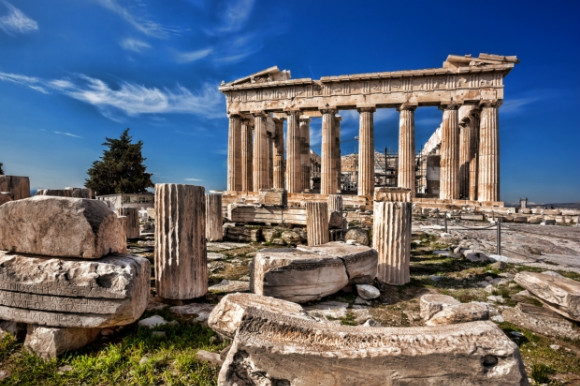
Athens isn’t your only option but it is a good starting point, no matter how you choose to travel. There are daily flights in and out of the capital and hundreds of ferries will start and finish here everyday. You’ll find three seaports in Athens, including Piraeus (the largest in the country), Lavrio and Rafina.
- The Saronic islands are closest to the capital and will take between 45 minutes and 3.5 hours to reach by boat.
- The Cycladic, Ionian and Sporades are slightly further away – it’ll take between 3 to 6 hours to get here.
- Crete, Dodecanese and the North Aegean will take anywhere from 8 to 16 hours. They are the furthest away from Athens.
Top Tip: If you are taking the ferry to one of the further islands, why not board in the afternoon and sleep in a cabin through the night? That way, you wake up in the morning without wasting any precious holiday time, ready to explore.
Greek island hopping tips:
- It is easy to visit both Mykonos and Santorini – you’ll find direct ferry connections between the two.
- Paros can be found halfway between Mykonos and Santorini and is close to Naxos. You can visit any of these for a day trip if you wish.
Carole Robinson: From Piraeus, Athens, the ferry goes on a hop via Naxos, Mykonos, Paros, Ios, Santorini, then Crete. We just hopped on and off. If we liked the place, we stayed longer, if not, we just went on to the next island. We got accommodation on arrival.
- It is simple to hop over to Crete directly from the Aegean Islands without the need to go back to Piraeus. You can also get the ferry from Crete to the Cyclades and Dodecanese.
- In the Aegean, start on Syros before heading to Tinos, Mykonos, Kos, Leros, Patmos, Rhodes, Santorini and Anafi. Alternatively, begin on Naxos and travel to Paros, Santorini, Amorgos, the Lesser Cyclades, Astypalaia, Ios and Folegandros.
- If you visit Rhodes make sure you hop over to Symi.
Clare Hanchet: You can get a boat to Lindos from Rhodes town for the day. There are donkeys which take you up to the Acropolis or you can walk up there – it sits at the top of the village and the views are amazing! You can also get a boat from Rhodes to Symi or pop over to Turkey, so it’s a really good place to stop if you’re island hopping or to use as a base to visit other places.
There are lots of beautiful beaches. At the main beach in Lindos you can water ski, snorkel, go for all-day fishing trips, use the inflatables, or hire pedalos and boats.
There are also loads of amazing restaurants and bars. My favourite restaurant is run by the Mavriko family and is called Mavrikos. Michali is front of house and Dimitri, his brother, is in the kitchen. They’ve won awards and have been featured in The New York Times. The food is unreal and it’s a beautiful place.
I love Yannis bar – my mum actually opened it with Yanni in 1976! Also Socrates, which is a bar in an old Lindian house. There are several clubs like Arches, which is open-air, and Amphitheatre, which is at the top of the village and has a view of the whole place and the Acropolis. They often have huge parties and famous DJs.
Plan your trip:
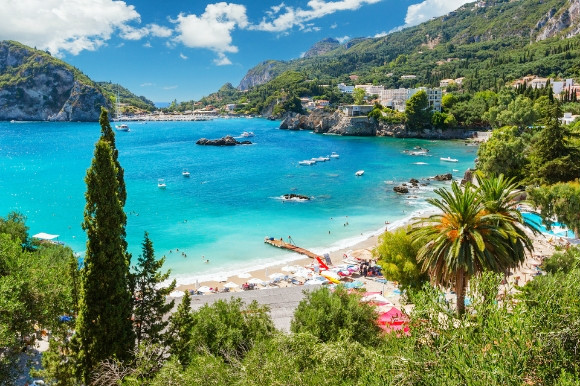
Firstly: You may already have some islands in mind but start by researching them so you know what each one has to offer. From there you can create a list of the ones you really want to visit. Knowing what you want to see and do while you’re there will help you determine how long you stay on each island.
Secondly: Take a look at them on a map – is it feasible? Are they within the same cluster? Visit islands that are relatively close or you’ll spend the majority of your time travelling – which defeats the point.
Top Tip: Pack light, especially if you will be moving around a lot. If you’re on and off ferries it may l be easier to take a large backpack rather than a suitcase.
Thirdly: While it might look feasible on the map, you need to double check that it is physically possible. Are you able to get a boat between these islands? You might find that it is easier – or you can only – travel to an island that looks a little further away due to the ferry schedules. You also need to consider where you’re flying in and out of to ensure your plans tie in with this.
Finally: Now you know the islands you want to go to, have checked which cluster they are in and confirmed you can travel between them, you need to map out your route.
Island hopping requires careful planning to make sure you get all your timings right. However, you may also want to wing it and book everything as you go. This gives you more freedom but may mean you have to research as you move around. Whether you book in advance or not, it is worth knowing where the boat departs from, how often and at what time.
As well as making a plan for travelling around, you also need to consider where you are going to stay – it is advisable to pre-book, especially if you are heading there in high season. Equally, you should decide what you would like to see and do while you’re on each island.
You may only have a short amount of time in each place so you want to make the most of it. Consider hiring a car or scooter, particularly on the more sizeable islands such as Crete, so you can see as much of it as possible.
Georgina Linstead: Island hopping via ferries is quick, easy and cheap. We flew into Athens and got our first ferry from there. We then camped on many of the islands – you don’t tend to need a tent as you can rent them at the site. However, on one island we turned up assuming this was the case and only discovered it wasn’t after finding out they had gone to buy us one – they even offered to let us keep it when we left! This is a prime example of how lovely and friendly the people in Greece are.
We went to Santorini and stayed in a family-run guest house – they took us around the island, enabling us to see the less touristy side. This included some of the beaches that are ‘hidden’ to all but the locals, as you need to know where they are and have a car to get to them. They were beautiful.
We also went to Mykonos, which is known as the party island. There are a lot of beach bars and clubs but we went there because you can get a day ferry over to Delos. This uninhabited island has ancient ruins which you can wander around yourself or see by joining a tour.
Now you know how easy it is, which route are you going to take?
 Inspiration
Inspiration
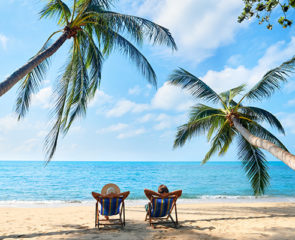 Travel Tips
Travel Tips
